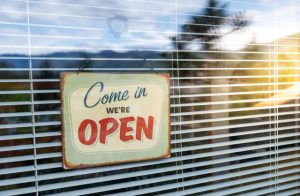I read in the Idaho Statesman that our governor has extended the stay-at-home order in Idaho until April 30. This is not a surprise to me given the abundance of caution across the country. What is surprising is the governor’s adjustment to non-essential business. “Any facility or service (including formerly ‘nonessential’ businesses) can begin to operate via curbside services, drive-in, drive-through pickup, mailed services, or delivery services.”
I’m certain many of the businesses that were previously considered non-essential see this order as a bit of light at the end of the tunnel and I applaud the move if it can be done safely. Beyond safety, I wonder what the effect will be on curb management, most especially in highly urbanized and densely populated areas that have a limited amount of curb in the first place. So many questions arise:
- What do cities need to do to make for an efficient and orderly use of the curb when public health is added to the list of objectives that heretofore included pedestrian safety, reduced congestion, and equity?
- What technologies can we quickly deploy that help promote emerging curb management goals?
- How do we effectively communicate to the masses how they are to participate in this new paradigm?
- Will this temporary shift result in permanent changes to access and mobility behavior?
- How will this play out for other market segments such as hospitals, universities and large venues that had their own unique curb management challenges pre-COVID-19?
One thing going for some of us now is that have time to think about these questions and how we can respond. Whatever your role, discipline or viewpoint, I encourage you to pick up the phone, schedule a conference call, and participate in any number of industry webinars and forums so together we can consider what’s likely to happen and how we can play our part.
Casey Jones, CAPP, is senior parking & mobility planner with DESMAN.

